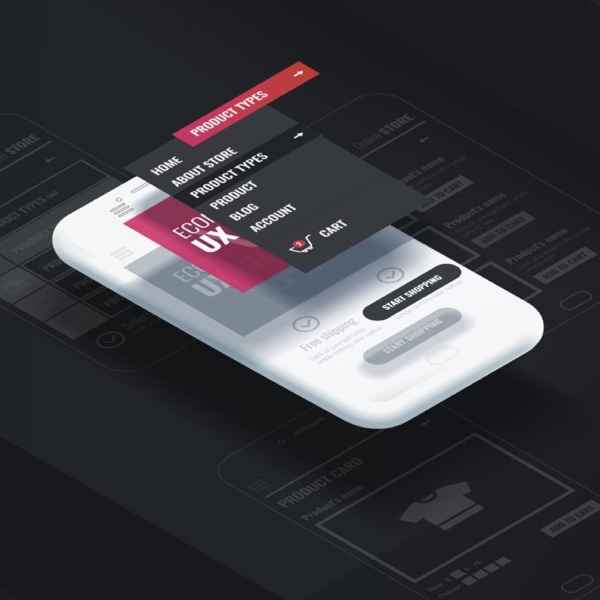Web development is big business these days since companies that don’t have at least some online presence are practically invisible. There are roughly 200 million actively updated websites, and billions of inactive sites still out there getting indexed by the search engines. Hundreds more websites are being created every minute. That means that businesses need to know what’s hot in web development if they want to differentiate themselves from the crowd. In this post, we’ve compiled 10 web development trends that are shaping our online environment.
We know that keeping up with these changes can be a real challenge. Every year, there are new web development trends that may or may not be declared obsolete after December 31st. For instance, flat UI is hot one year, and then it falls flat the next. We also understand that the only constant in the web development industry is change, which can be terrifying for companies looking for web development or custom software like a portal, ecommerce platform, or intranet. Choosing to make that kind of investment requires trusting that a developer has a solid understanding of which web development trends were built to last. And the only way to do that is through education.
Keeping abreast of web development trends like the ones below is the only way business owners can be sure that they’re developing for the future of the web instead of dooming themselves to rapid obsolescence. With that in mind, here are 10 emerging web development trends to watch for in 2019 and beyond:
RAIL Performance Analytics
Fact: A website that is frustratingly slow will drive customers away. Measuring performance and then optimizing to reduce bounce rates is the solution, but a lot of common performance metrics only take into account basic load times. User interactions (and responses to inputs like taps, clicks, and scrolls) don’t come into play, so a website that appears consistently fast in tests can actually fail when it’s assessed by actual users.
The user-centric RAIL model for measuring site performance takes all possible user actions into account. RAIL is an acronym for “Response, Animation, Idle, and Load,” and it categorizes all actions into those four categories. There are performance goals for each — along with a structure necessary for better performance — and it’s incredibly useful for any company that wants to ensure their customers have a seamless online experience.
Modular Development
More robust and flexible than old-fashioned templates, modular website development nonetheless streamlines the development process by allowing developers to reuse components and modules when creating web pages. Modular design — which relies on patterns — is less restrictive than building with templates and much faster than coding from scratch. The end result are good-looking, functional websites and web applications that come together quickly.
Richer, More Beautiful Designs
Simplicity has been one of the dominant web development trends for many years now, but this year there has been pushback on austere designs. Plain black text on a white background on sites and a myopic focus on functionality is being replaced by online destinations featuring more imagery, vibrant colors, complex shapes, and animations. While graphical content is standing in more often for text, there is also a growing demand for sites that don’t just convey information, but also tell rich stories.
This is likely being driven by the fact that handheld devices are now better equipped to handle that type of content and by users’ shorter and more fickle attention spans. Captivating graphics and powerful storytelling can create an attention-grabbing narrative experience that builds stronger brand loyalty.
Better GDPR Compliance
The European Union’s global data protection regulation (GDPR) was established to protect EU residents’ identity information. That includes not only their physical locations and IP addresses, but also their health and biometric data, genetic code, racial and ethnic data, and information about sexual orientation and political opinions.
Both businesses and web developers have to be aware of the GDPR and how to comply with it in 2019 and beyond. This isn’t just a European issue; any company who does business with or has an audience that includes European residents has to comply. Google, Facebook, and other big tech companies have been or are being investigated for GDPR violations, but smaller firms shouldn’t assume that they will pass under the radar.
Chat Bot Integration
The biggest 2019 web development trends clearly illustrate that interactivity and engagement are huge when it comes to audience-building and retention. One of the easier ways to improve and prolong user interaction on websites is to build in a chat bot. These AI-driven programs can drive a surge in revenue by leading people through the sales funnel. According to surveys, 57% of consumers are happy to encounter a chatbot because it means they can get help immediately. And companies can save a lot of money by using chat bots to answer simple inquiries, which also frees up staff to concentrate on the tougher processes that AI can’t handle yet.
Chances are good that chat bots will actually be the number one application for AI integrations in the next five years, so businesses should consider getting on board while this trend is still fresh. Gartner predicts that over 85% of customer business interactions will happen without human intervention on the company side by 2020!
Voice Search Optimization

More and more search queries are going through digital assistants like Siri, Alexa, and Cortana. These days, about 60% of adults use voice search on a daily basis, and ComScore has predicted that 50% of all search queries will be done via voice instead of text by 2020. What that means is that businesses investing in web development need to consider voice search optimization (not just text and backend optimization) when working on projects. Optimizing sites and applications for mobile is a good first step, but smart companies will take steps like adding a voice search recognition API and other technologies that support voice search to their sites.
Runtime Web Environments
Websites and applications have to provide service twenty-four hours a day, seven days a week. Even a short period of downtime can cost a business big bucks in lost sales and lost loyalty. Web development is now happening in runtime environments where new code and bug fixes can be made without any service interruptions whatsoever. The result is extremely low or even no downtime during upgrades.
Push Notifications for Sites
The email newsletter is out. Inbox clutter is out. Push notifications are in, and not just for mobile apps. In 2019, companies with websites are replacing their long, clunky newsletters with discreet notifications in the toolbar pushed via the site itself. They can alert users to newly published content, personalized promotions, special offers, and upcoming events — and they’re easy to manage on both ends.
The Return of Static Pages
Given how much emphasis there is on capturing and holding people’s attention there is in web development, it’s somewhat surprising that static web pages are making a comeback. The fact is, however, that some web development trends complicate the online environment for the end user. Sometimes good UX design means keeping it simple. Static web pages are easy to make, extremely secure, and load very quickly. There’s no need for users to figure out how to use complex navigation tools to find the information they’re looking for and that means the user journey is easier to curate because there are fewer rabbit holes to get lost in.
Stronger Cybersecurity
In one survey by Alert Logic, data breaches, data privacy infringement, and confidentiality breaches are the biggest concerns IT professionals have. Because these security issues now routinely make news, it should come as no surprise that businesses and their users are similarly concerned about cybersecurity in web development. Of course, not every company will use its website to collect or process user data or to handle ecommerce transactions, but even the downtime caused by a cyber attack on a basic website can have a huge negative impact on business. More companies are realizing that security needs to be a part of the discussion when building a website or web app because that’s the only way to secure online properties against future threats.
On top of these key web development trends for 2019, expect to see more sites and applications concerned with the Internet of Things, augmented reality, Accelerated Mobile Pages, motion UI, and applications leveraging Blockchain technology. There’s no doubt at all that the face of the web has changed thanks to the rise of mobile devices. But as the trends above illustrate, the foundation of the web is changing, too, and that represents an opportunity for savvy businesses to update their online properties with new and better features that will stand the test of time.
At Bitbean, we know that web development has to help businesses gain a competitive edge to be worth the investment. We leverage some of the most effective web development tools and technologies to enhance not only the look and functionality of our clients’ websites, but also to optimize the end-user experience for maximum engagement and ROI.
Contact Bitbean for a free consultation. We’ll build the right software solution to meet your company’s needs both now and in the future.






